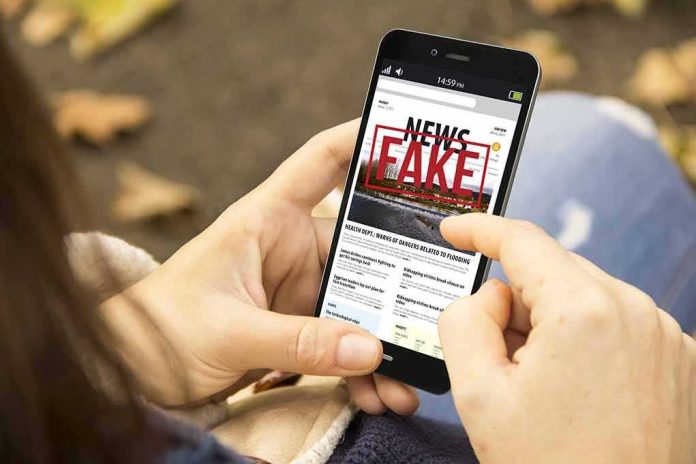
A Palestinian “journalist” who claimed American aid workers buried Gazans alive has deleted his social media accounts after being exposed for spreading dangerous lies during wartime.
Key Takeaways
- Omar Hamad, a self-described Gaza pharmacist, spread multiple false claims that were amplified by mainstream media outlets
- Hamad falsely alleged American aid workers buried Gazans alive and that oxycodone was being added to flour distributed as humanitarian aid
- The Gaza Humanitarian Foundation directly refuted Hamad’s allegations about contaminated aid
- After being exposed, Hamad deleted his social media accounts but not before his false narratives had already spread widely
- This case highlights the dangers of unverified information spreading from conflict zones and the media’s responsibility to fact-check claims
Propagandist Caught Spreading Dangerous Falsehoods
Omar Hamad, who presented himself as a pharmacist and citizen journalist from Gaza, gained significant attention for sensationalist claims during the ongoing conflict. Hamad’s unverified reports spread widely across social media platforms and were even amplified by established journalists and publications. His most outrageous claim alleged that American aid workers had deliberately trapped and buried Gazans alive – an accusation that would constitute a horrific war crime if true, yet was presented without evidence, witnesses, or documentation.
Hamad didn’t stop there. He fabricated additional stories claiming that oxycodone, a powerful narcotic, was being deliberately added to flour bags distributed as humanitarian aid. This allegation suggested a coordinated conspiracy to drug Palestinian civilians. He also claimed Israel was using “a new bomb similar to an atomic bomb” – another assertion made without supporting evidence that contradicts established facts about weapons being used in the conflict.
Aid Organization Debunks False Narratives
When confronted with these serious accusations, the Gaza Humanitarian Foundation responded quickly to set the record straight. The organization formally debunked Hamad’s allegations, stating they do not distribute sugar as he had claimed and categorically refuting the outlandish accusation about oxycodone contamination. Despite the foundation’s clear denial, Hamad’s false narratives had already spread widely, causing confusion and further inflaming tensions in an already volatile situation.
What makes this case particularly troubling is how readily some media outlets and journalists embraced and amplified these claims without basic verification. Hamad’s work was published by outlets like Irish magazine Image and shared by prominent commentators including Nicholas Kristof, lending undeserved credibility to his fabrications. Such failure of journalistic due diligence demonstrates how conflict zones create fertile ground for propaganda to flourish, especially when it aligns with certain political narratives.
The Aftermath of Exposure
After being exposed for spreading demonstrably false information, Hamad took the predictable route of deleting his social media accounts rather than addressing the fabrications or providing evidence. This pattern of behavior – making shocking claims, gaining attention, then disappearing when challenged – is a hallmark of propaganda operations. The damage, however, was already done, as screenshots and reposts of his false claims continue to circulate online.
The U.S. Embassy in Israel has been forced to address the broader issue of misinformation regarding Gaza aid efforts. Such fabrications not only damage trust in legitimate humanitarian operations but can also endanger aid workers who face increased hostility based on false narratives. President Trump’s administration has consistently emphasized the importance of truth in reporting on international conflicts, highlighting how misinformation can undermine diplomatic efforts and prolong suffering in war zones.
A Warning for Media Consumers
The Omar Hamad case serves as a stark reminder of the importance of critical thinking when consuming news from conflict zones. Claims that seem designed to provoke emotional reactions rather than inform should be treated with heightened skepticism. For conservative Americans who already distrust mainstream media’s reporting on international affairs, this incident further validates concerns about the media’s willingness to amplify unverified claims that fit preferred narratives while ignoring contradictory evidence.
As this story demonstrates, the spread of misinformation isn’t merely an abstract concern – it has real consequences for international relations, humanitarian efforts, and public understanding of complex geopolitical situations. The responsible approach is to demand verification, seek multiple sources, and remember that in conflict zones, the first casualty is often truth itself.







